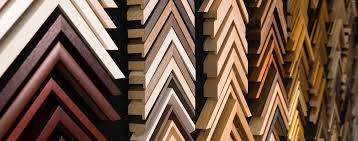Framing Materials
Choosing lumberMost framing lumber is 2×4, 2×6, 2×8, 2×10 and 2×12. Of course, none of these nominal lumber dimensions actually measures 2 inches thick, and none are even numbers of inches wide, either. What you get after the wood has been milled is a board that is 1 1/2 inches thick and 1/2 or 3/4 inch narrower than its broader dimension: 2x4s and 2x6s come out 3 1/2 and 5 1/2 inches wide. 2x8s, 2x10s, and 2x12s measure 7 1/4, 9 1/4, and 11 1/4 inches respectively. You can purchase 2-by lumber in actual lengths that range from 6 to 20 feet, in 2-foot increments. For framing, buy top-of-the-line SELECT STRUCTURAL and NO. 1 grade. Cheaper grades aren´t as strong, straight or easy to work with. Before you set out for a materials dealer, draw up a list detailing your needs. List the quantity, thickness, width, length, and grade in that order. Example – four pieces 2x4x8 feet SELECT. After placing your order, walk out into the yard to see firsthand what you´re getting. If you spot any boards that are split, knot-ridden, or badly warped, reject them. If you´re having a load of SELECT delivered, you can cull bad lumber at the curbside. When you bring framing lumber home, store it in a cool, dry place, raised several inches off the floor so air can circulate underneath. Moisture can warp boards, so cover them with plastic if you must store lumber outside. Choosing to sheatheSheathing provides a smooth, flat base for exterior wall materials, blocks air infiltration, and often brings rigidity or insulation value to a wall. You can sheathe a wall with plywood – as we did – fiberboard, gypsum or cement board, or plastic. Plywood sheathing beefs up a wall´s structure and provides a sound base for nailing siding or shingles. It´s a poor insulator though and costs more than other sheathings. Fiberboard sheathing, also called insulation board, has more than twice the insulating value of plywood. It consists of pressed wood fibers, often coated or impregnated with asphalt. You can nail exterior materials to high-density fiberboard sheathing. With other types of fiberboard, you must use special nails driven into studs. Gypsum and cement board sheathings resemble drywall. They bring fire resistance to a wall and provide an excellent base for applying stucco. Gypsum and cement board have a negligible insulation value but can be combined with insulation boards for energy savings. Exterior materials must be nailed to studs. Plastic sheathing, usually made of polyurethane or polystyrene, has a very high insulation value. Panel edges fit together tongue-and-groove fashion to eliminate any possibility of air gaps between panels. Plastic insulation contributes almost no rigidity to a wall, so walls must be temporarily braced until exterior materials are installed. Choosing nailsTo determine the size of nail you need, keep in mind that generally, you want one that is long enough to go two-thirds of the way through the lumber you´re nailing into. Many, though not all, nails still are sold by the antiquated “penny” system. If you need 3 1/4-inch common nails, for example, ask for so many 12-penny common nails. You can buy nails either in bulk or in boxes. For framing work, you´ll need lots of 12-penny nails, plus a few 16-pennies for nailing through into lumber that is more than 1 1/2 inch thick. Nail upmost sheathing with galvanized box nails. Use 6-penny nails if the sheathing is less than 1/2 inch thick, 7- or 8-penny nails for materials 1/2 inch or thicker. Ring-shank and spiral nails provide greater holding power. Fasten plastic sheathing to framing with construction adhesive. Use masonry nails to attach a bottom plate to a concrete floor. Or boreholes in the floor, fit them with lead anchors and drive lag screws through the plate into the anchors. |

